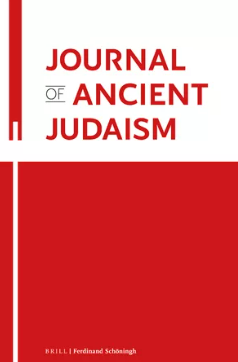https://doi.org/10.30965/21967954-12340019
본 연구는 마태복음 4장 1-11절의 시험 기사(pericope)와 시편 페셰르(4QpPsa, 4Q171)가 하나의 공통 전승에 기반하고 있다고 제안한다. 이 전승의 기저에는 시험/유혹에 대한 이중-삼중의 구조가 놓여 있다. 이는 이스라엘이 광야에서 겪은 세 가지 오경의 시험에 근거하는데, 이 시험들은 히브리어 어근 ‘나사’(נ–ס–ה, “시험하다”)를 통해 식별 가능하며, 각각 ‘율법 준수’, ‘우상 숭배로 이끄는 거짓 예언’, 그리고 ‘하나님 시험하기’이다. 이와 혼합되어 개별적으로 연결되는 것이 바로 벨리알의 세 가지 그물, 즉 각각 ‘음행’, ‘부(富)’, ‘성전 모독’이다. 또한 하나님을 우회적으로 대리하는 악마의 역할, 시험의 장소와 형태, 그리고 두 텍스트의 상응하는 시험 부분에서 사용된 어휘 등은 성경의 서사를 넘어서는 공통점들이다. 이러한 공통 전승은 오직 시편 37편과 4Q171에 나타난 그 주해를 통해서만 인지될 수 있다. 결론적으로, 본 논문은 서로 다른 이해를 낳게 한 이 전승의 기원과 통시적(diachronic) 역사를 탐구한다.
This study posits that the Temptation pericope of Matt 4:1–11 and the Psalm Pesher (4QpPsa, 4Q171) are based on a common tradition. Underlying this tradition is a dual-tripartite construct of testing/temptation. This is based on the three Pentateuchal wilderness tests encountered by Israel which are identifiable through the root נ–ס–ה/“test:” keeping the law, false prophecy leading to idolatry, and testing God. Conflated, and individually correlated with this, are the three nets of Belial: “fornication,” “wealth,” and “profanation of the Temple,” respectively. Also going beyond the biblical narrative are the Devil acting in circumlocution for God, the venues, forms of testing, and lexicon used in corresponding testing sections of these two texts. Only through Psalm 37, together with its exegesis in 4Q171, is this shared tradition recognized. In conclusion, the provenance and diachronic history of this tradition, which resulted in differing understandings of it, is investigated.






